If you have been injured in an accident in Victoria that was not your fault, you may be entitled to make a common law claim for damages. However, making a common law claim involves a process, from proving that the other party owed you a duty of care, breached that duty and caused your injury to showing that your injury is serious and meets the required threshold. This is where personal injury lawyers in Melbourne can help you with your case.
In this article, we will explore the specifics of common law claims, shedding light on important details that can help you better understand it.
What is a common law claim?
If you have sustained an injury through the negligence of your employer or a third party, you may be entitled to commence legal action for ‘common law’ damages. This is a lump sum payment made in compensation and recognition of the impacts your injury has on your life.
If you are injured through negligence of your employer, you will lodge a common law claim following a WorkCover claim. If you are injured through the negligence of a third party in a motor vehicle, you will lodge a compensation claim following a TAC claim.
Am I entitled to common law damages claim under the workers compensation scheme?
Under the Victorian Workers Compensation Scheme, WorkCover, an injured worker may be entitled to common law compensation where a duty of care has been breached or an employer has not complied with the legal obligations that have resulted in injury or death. This process is called a common law claim.
Am I entitled to common law damages after a transport accident?
Under the Transport Accident Commission (TAC) scheme you can make a TAC common law claim if you have suffered permanent injury or damage as a result of negligence by another party during an accident.
What is classified as Serious Injury in a TAC claim?
A serious injury in a TAC claim is defined by the Transport Accident Act 1986 as a single significant injury or multiple injuries that have occurred as a result.
These include:
- Serious loss or impairment of body functions;
- Serious long-term disfigurement;
- Severe long-term mental distress;
- Loss of a foetus;
- 30% or more of permanent impairment.
Serious injuries are compensated under a common law claim where you have suffered the injuries as a result of third-party negligence and has had, and will continue to have, a significant impact on your life long-term.
What is classified as Serious Injury in a WorkCover claim?
‘Serious injury’ according to the WorkSafe website refers to injuries suffered as a result of employer or third-party negligence or a breach of care. Under the WIRC Act, a serious injury is defined as a serious impairment or disfigurement that will continue to have a significant impact on your life.
These include:
• Permanent loss of impairment of body functions;
• Permanent serious disfigurement;
• Permanent and severe mental distress or behavioural disturbance;
• Loss of a foetus.
What is a Serious Injury Certificate?
A serious injury certificate is a document that considers your injury and its long-term impact. The serious injury certificate legally recognises that you have a ‘serious injury’ and can be used to start the process of claiming common law damages/compensation.
What is the difference between a serious injury and a significant injury in a common law claim?
We refer to serious injuries in the context of Workcover and TAC claims. In these claims, the injured person must establish that they satisfy the Serious Injury Threshold. In public liability/medical negligence (malpractice) cases, the Wrongs Act 1958 (Vic) requires the injured person to establish the Significant Injury Threshold.
What is a significant injury?
The term ‘significant injury’ is used to define an injury that is long-term or has significantly impacted your life as an outcome of medical negligence or through the negligence of another (I.e. in a public place).
To recover a lump sum impairment benefit and/ or common law damages for pain and suffering (non-economic loss), your personal injury lawyer must establish you have sustained a ‘significant injury’.
For non-economic loss, certain types of injuries are deemed ‘significant’ without requiring further assessment. These include:
- Loss of a foetus;
- Loss of a breast;
- Psychological trauma resulting from the death of a child caused by injury to the mother, foetus, or child, during or immediately after the birth.
The examination must be carried out by an independent medical examiner where the degree of that impairment is assessed on a set of guides and instructions by the AMA ethical guideline for conducting independent medical assessments. They will consider factors such as loss of functions or range of motion and determine if the illness or injuries are so severe that they have caused lasting damage.
Is a common law claim different to a claim of negligence?
No, a common law claim is not different to a claim of negligence. A common law claim is a fault-based (negligence) claim. To be entitled to common law damages, you must establish negligence by a third party.
In WorkCover claims, the injury of the worker must be classed as serious and negligence by the employer or a third party connected to the employer must be proved. In a TAC claim, the injury must be classed as serious and there must be an at-fault party who was negligent.
How much compensation am I entitled to?
The minimum and maximum amounts for common law payout in Victoria for 2022/2023 are:
- Pain and suffering – (WIRC Act) threshold $65,120;
- Pain and suffering – (WIRC Act) maximum $660,970;
- Pecuniary loss – WIRC Act threshold $67,430;
- Pecuniary loss – WIRC Act maximum $1,518,180.
Common law claims consider the impact an injury has on a person’s life and compensate them accordingly. There are two types of common law ‘damages’ which can be claimed:
- Pain and suffering only, without any loss of earnings component.
- Pain and suffering and economic loss.
Disclaimer: Figures are correct as of 03/05/2023. Please note that these figures are set to change in July 2023. Common Law Payout fees are subject to change at any time. Payouts for injuries may vary depending on various factors, which can affect the payout at the time of delivery.
Contact Maxiom Injury Lawyers today to discuss what compensation amount you may be entitled to.
What are the steps involved in making a common law claim under the workers compensation scheme?
There are 12 steps to make a common law claim under the workers compensation scheme, these are as follows:
- Workplace injury / illness / accident occurs.
- Claimant seeks medical attention and help.
- Employee completes an incident report and provides it to their employer.
- Claimant completes and lodges a worker’s compensation claim form.
- Claimant seeks legal advice and representation from a personal injury lawyer in Melbourne.
- Claimant attends a serious injury medical assessment for an independent evaluation of their injuries.
- Submit a claim for impairment benefit lump sum compensation.
- Where compensation for damages is sought, a common law claim is lodged.
- Parties seek to settle the matter out of court through mediation, this is called the pre-litigation phase.
- If no resolution is achieved at mediation, further legal proceedings commence.
- Hearing date is set.
- The legal case is heard before a court and jury to determine an appropriate settlement.
If you suffer from an injury at work, it is recommended that you seek the guidance of No Win No Fee lawyers as soon as possible to help you gather all the documentation and materials required to ensure that you receive the full benefits that you are rightfully entitled to.
What are the steps involved in making a common law claim under the TAC scheme?
There are 13 steps to make a common law claim under the Transport Accident Commission (TAC) scheme, these are as follows:
- Car accident occurs.
- Obtain information of the other party involved in the road accident, including:
- Full name and address
- Contact phone numbers
- Licence and registration details
- Insurance information
- Vehicle make and model
- Obtain contact details of witnesses, including requesting copies of any photos and/ or videos taken.
- Dial 000 to arrange for necessary Emergency Services teams (Police, Ambulance, Fire) to attend the scene of the accident.
- If not necessary, at a later stage you must:
- Seek medical attention and help for assessment of your injuries.
- Report the accident to the police/relevant public transport authority (if the accident occurred on public transport) to acquire reports for the purposes of your insurance claim.
- If not necessary, at a later stage you must:
- Contact your insurer and provide details of other parties and witnesses involved.
- Make a TAC claim online or lodge via the hospital providing urgent medical treatment.
- Seek legal advice and representation from a road accident injury compensation lawyer in Melbourne.
- Attend a medical assessment for an independent evaluation of your injuries.
- Submit a serious injury application.
- Once a serious injury certificate is granted, parties seek to settle the matter out of court through an informal settlement conference. This is called the pre-litigation phase.
- If no resolution is achieved at mediation, further legal proceedings commence.
- The hearing date is set.
- The legal case is heard before a court and jury to determine an appropriate settlement.
If you are injured as a result of a car accident, it is recommended that you call our No Win No Fee lawyers on 1800 85 30 85 to help you gather all the documentation and materials required to ensure that you receive the full benefits that you are rightfully entitled to.
What do I need to do to prove negligence in my common law claim?
Once you become injured / aware of your injury, it is vital that you seek medical attention to begin documenting your injury history.
Your doctor or medical professional will be able to supply you with the supporting documents and medical evidence you need to prove your injury and the validity of your workers compensation or TAC claim. Medical evidence required for your work injury compensation claim includes:
- Diagnostic reports;
- Certificate of Capacity (how the injury has affected your ability to work).
Proving an asbestos injury of dust disease
To make a successful workers compensation claim for an asbestos injury or dust disease, you need to prove that your employer or a manufacturer breached their duty of care. You also need to prove that such negligence significantly contributed to the cause of your injury. To determine this, the extent, duration, and intensity of the asbestos exposure are examined.
Our asbestos lawyers can help determine who the responsible party is for your injuries and lodge a claim on your behalf as soon as possible.
WorkCover benefits and common law damages in Victoria
What is a WorkCover claim?
In Victoria, a WorkCover claim is a legal process that allows an injured worker the right to seek damages for their injuries or related expenses if a duty of care has been breached by an employer or third party.
What are the types of WorkCover claims?
Common WorkCover claims include:
- Physical injuries i.e., cuts, lacerations, burns, abrasions, broken bones, fractures and penetrating wounds;
- Psychological and psychiatric injuries i.e., Depression, anxiety, PTSD;
- Diseases i.e., Asbestosis & Mesothelioma, silicosis (silica dust exposure) or other work-related respiratory diseases, asthma, industrial deafness and Q-fever;
- Aggravated injury i.e., a pre-existing injury made worse from doing your job; continuing symptoms from an original injury (even after you have returned to work.)
What information do I need for a WorkCover common law claim?
To make a common law claim you need to collect the following information:
- Details of your impairment and the nature of your injury.
- How you suffered the injury and/or the probable cause.
- Employment history of where the injury took place.
- Your medical history detailing any previous injury or conditions that may have contributed to the impairment.
- Any previous compensation concerning prior injuries or conditions.
- Details of the employer’s negligence and how they breached their duty of care.
- Witness statements.
- A medical report from an independent medical examiner.
Claiming work injury damages in Victoria can be challenging, therefore it is recommended to work with a personal injury lawyer that can fight in your corner to ensure you get the maximum entitlements you deserve.
Can I still receive WorkCover benefits during a common law claim?
Yes, you can still receive WorkCover benefits during the common law claim process.
In Victoria, WorkCover benefits cover a variety of expenses such as medical treatment and the rehabilitation needed to recover from your injuries.
After you have received your lump sum payout for workers’ injury damages, you will no longer be eligible for workers’ compensation benefits related to the same injury (I.e. medical expenses and weekly payments for rehabilitation). You may also be required to repay the past weekly repayments from the settlement amount.
If your injuries are permanent, you may also be eligible for a lump sum payment and to make a ‘damages’ claim.
Is there a time limit for a common law claim for work injury damages?
Yes, workers compensation (WorkCover) claims in Melbourne have strict time limits. A common law claim can only be made 18 months after the date of injury or once your impairment benefits have been finalised.
If you have been exposed to asbestos, you must submit a workers’ compensation claim within three years from the date you become aware of the injury.
However, there are circumstances where an injured Victorian can lodge a claim out of time. We recommend speaking with one of our Workers Compensation Claim Lawyers to discuss whether you may be eligible to make a claim ‘out of time’.
The Insurer has 28 days to provide their decision.
Who can help me with my work injury or common law claim?
A specialised WorkCover lawyer can assist with lodging your workers compensation. At Maxiom Injury Lawyers, you will be partnered with an Accredited Specialist in workers’ compensation who is accessible, will advocate for your rights, be your voice and ensure you receive your full and fair entitlements. We are also committed to keeping legal fees low so that you receive the maximum amount of compensation.
TAC common law claims
In Victoria, the TAC provides ‘statutory benefits’ which cover medical expenses such as treatment and rehabilitation, and income support if you are unable to work. If you have been injured in a road accident, and have sustained injuries, you may be entitled to common law damages. If your injuries are permanent, you may also be eligible for a lump sum payment.
What is a transport accident?
The TAC legislation defines a ‘transport accident’ as an incident directly caused by the driving of a motor vehicle – i.e., motor car, railway train or tram.
What is a TAC claim?
A TAC claim is a legal process that allows individuals who have been injured in a transport accident in Victoria, Australia to seek compensation for their injuries and related expenses. It is an insurance claim which covers the cost of necessary medical treatment to help recover from a road accident injury. TAC claims are no-fault financial support, although further compensation may be available where another party was at fault.
What are the types of TAC Claims?
TAC claims can be made for accidents which include:
- An accident involving two cars;
- Motorcycle and scooter accidents;
- Bicycle accidents;
- Quad bike accident;
- An accident involving a car and pedestrian;
- An accident involving a cyclist and an opening door of a car;
- Passengers injured on or by a train, bus or tram.
It is important to note that the above examples are caused by the driving of a vehicle.
There are some cases where an injury has been sustained while in a vehicle, but it is not covered by TAC. For example, if a passenger in a vehicle assaults the driver, this would not fall within the definition of a transport accident. For this matter, the victim would claim compensation through the Victims of Crime Assistance Tribunal (‘VOCAT’).
Can I still receive TAC benefits during a common law claim?
Yes, TAC will still pay TAC statutory benefits during the process of making a common law claim.
In Victoria, TAC statutory benefits cover a variety of expenses such as medical treatment, income support if you are unable to work, support for you and your employer when you return to work and services to help you recover from your injuries.
You may also be able to claim a lump sum payment if you are eligible for compensation and make a ‘damages’ claim. Talk to a TAC claim lawyer to learn more about your situation.
How do you win a common law claim in Victoria?
The best way to win a common law claim is to speak with a legal expert with a high success rate who specialises in workers compensation, transport accidents and personal injury law.
The benefits of working with a personal injury lawyer cannot be over-emphasised. A personal injury lawyer has an in-depth understanding of the legal processes and tactics employed by insurance companies and can advise you on how to best fill out the necessary paperwork to maximise your chances of success, alert you to the required evidence you will need, and help you understand what compensation you might be entitled to.
There are five steps Maxiom Lawyers suggest you take for a successful common law claim and to ensure you achieve the maximum compensation you deserve.
- Always keep the evidence.
This includes photos, witness details, and every person involved during the process, including police and medical personnel. It is better to have the information and not need it than need it and not be able to obtain it. Make sure you collect all the information, write it down, keep it in a safe, accessible space and get advice on how and when you may need to use these details. - Seek medical care and proof.
Obtain the best medical care and all the correct medical proof you need from a registered medical practitioner and keep all information, including medical records, medical reports, receipts, and travel expenses, ready and on hand. - Don’t rush into a settlement.
We understand wanting the process to be over as quickly and as stress-free as possible, but this will not always result in the best outcome for you. No detail or information is too much, so be as detailed as you need to be with your lawyer. An expert Personal Injury Lawyer will take all the details and information you have provided and let you know if any more information is required. - Get legal advice.
Talk to a no-win no-fee lawyer to get the best advice and provide them with all the information and details required. No question, concern, or worry is too much. An experienced personal injury lawyer will have dealt with similar cases and can help advise you on everything you need. Ask questions and get to know them personally. This is your personal injury claim, and you are entitled to not only the maximum compensation but also the best legal advice to help you win your case.
We hope this article has helped answer some of your questions. The pathway to recovery always starts with seeking help. If you require personal injury compensation lawyers in Melbourne who you can trust, contact Maxiom Injury Lawyers at any time by phone or by form.
If you are not quite ready to speak to us, we also offer a Free Claims Check so you can find out if you are eligible to make a claim for your injury. We are always here to help and guide you on your journey.











